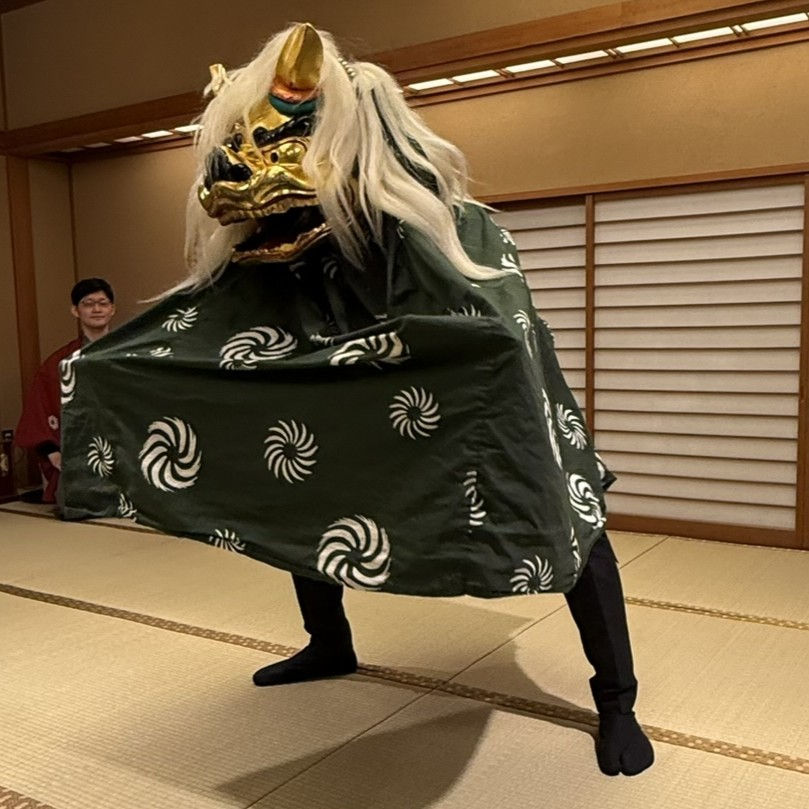Top 10 Things to Do in Tokyo, Japan – No.3: The Sacred Art of Daikagura: Japan’s Lion Dance of 1,400 Years of Happiness
- 真也 山田
- Jun 21
- 3 min read
Updated: Jun 28

As the third installment in our “Top 10 Things to Do in Tokyo, Japan” series—following the acclaimed Exclusive Premium Male and Female Geisha Experience in Kagurazaka— we invite you to discover a hidden facet of Japan’s cultural soul.
When foreign visitors think of Japanese traditional arts, Kabuki and Sumo often come to mind. Kabuki dazzles with its ornate costumes and dramatic flair. Sumo impresses with ritualized intensity and raw physical power. Both are steeped in centuries-old tradition and continue to capture global attention.
And yet, between the theatrical grandeur of Kabuki and the combative stillness of Sumo lies a quieter, more spiritual art—Daikagura.

A Living Legacy Rooted in the Divine
Long before it graced urban stages, Daikagura began as a Shinto purification rite. Priests from venerable shrines such as Ise Jingū and Atsuta Jingū travelled from village to village, dancing with lion masks and sacred objects to bless households, ensure good harvests, and ward off calamity.
By the Edo period (1603–1867), these itinerant rites blossomed into a form of popular entertainment performed in yose variety theatres. Yet the spiritual core—offering joy to the gods and good fortune to the people—has remained unchanged for over 1,400 years.

The Japanese Lion Dance — Sharing Happiness Over 1,400 Years
Central to Daikagura is the shishimai, or Japanese lion dance—a sacred performance that has been practiced in Japan for over 1,400 years.
While lion dances are performed in various cultures across Asia, the lion dance in Japan (Shishimai) is uniquely spiritual in nature, rooted in Shinto purification rituals rather than celebratory parades.
When the lion playfully nips a child’s head or snaps its jaws near spectators, it is believed to chase away evil and bring blessings. It’s more than entertainment—it’s a centuries-old act of sharing happiness.

Why It Matters: Spirituality Meets Aesthetic Precision
Unlike Kabuki, Daikagura is not a scripted drama with actors in elaborate make-up. Unlike Sumo, it is not a contest of strength. Instead, Daikagura is a living expression of prayer, discipline, and aesthetic control—performed not on cavernous stages but in intimate settings where every breath is felt.
Each performance is a delicate balancing act—literally and metaphorically. A stack of porcelain bowls poised atop a single rod. A spinning ball dancing on an umbrella. The performer walks a fine line between mastery and surrender, offering the audience harmony between motion and stillness, skill and spirit.
Among Japan’s other revered arts—such as the meditative stillness of Noh, the codified grace of the tea ceremony, and the imperial elegance of Gagaku—Daikagura occupies a uniquely dynamic place. It shares their sacred origins, yet it channels its spirituality through motion, balance, and risk. A single misstep can shatter a tower of bowls; in that tension lies its power.
Every prop—be it umbrella, ring, or lion mask—is treated with ritual care. These are not tools for showmanship but sacred extensions of the performer’s body, bridging the earthly and the divine. The Japanese aesthetic of ma—the art of meaningful silence and spacing that gives each motion depth and dignity—frames each feat as a visual prayer rather than a circus stunt.

An Invitation to the Rare and Authentic
For those who seek more than sightseeing snapshots, Daikagura can be experienced in the refined privacy of select venues:
Kagurazaka Ryotei "Yukimoto" – Witness a master performer up close in a historic traditional restaurant in Tokyo, accompanied by a cultural interpreter.
Bespoke Cultural Itineraries – Combine Daikagura with a geisha banquet, a private wagashi & tea ceremony, a Noh experience, or a samurai sword lesson for a full-day immersion curated by local experts.
Every program is invitation-only, limited to small private groups, and features top-tier performers who typically appear before imperial or shrine audiences. Live interpretation ensures that meaning—not just movement—is fully conveyed.

Conclusion: Daikagura—Where Tradition Dances with the Divine
Daikagura is more than an acrobatic marvel; it is a 1,400-year-old dialogue between humans and the sacred. In each poised bowl, in every lion’s leap, Japan’s invisible threads of ritual, beauty, and joy become visible—if only for a breath-held moment.
To witness Daikagura is to stand at the crossroads of history and living art, to feel spiritual devotion rendered in perfect balance. For the discerning traveler searching for authenticity beyond Kyoto’s well-trodden paths, Daikagura offers a rare chance to experience traditional dancing with the divine—and to share in a happiness that has endured for more than 1,400 years.

▶ Explore more: Kagurazaka Refined Wander Official Site
How to Access Kagurazaka
The Kagurazaka area is conveniently located within 30 minutes of any major station in Tokyo. This is because Kagurazaka is situated in the heart of Tokyo, at the center of the Yamanote Line. Please come and visit this convenient and charming Kagurazaka.




Comments